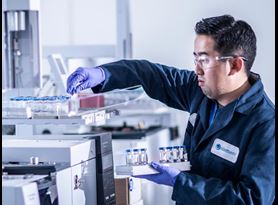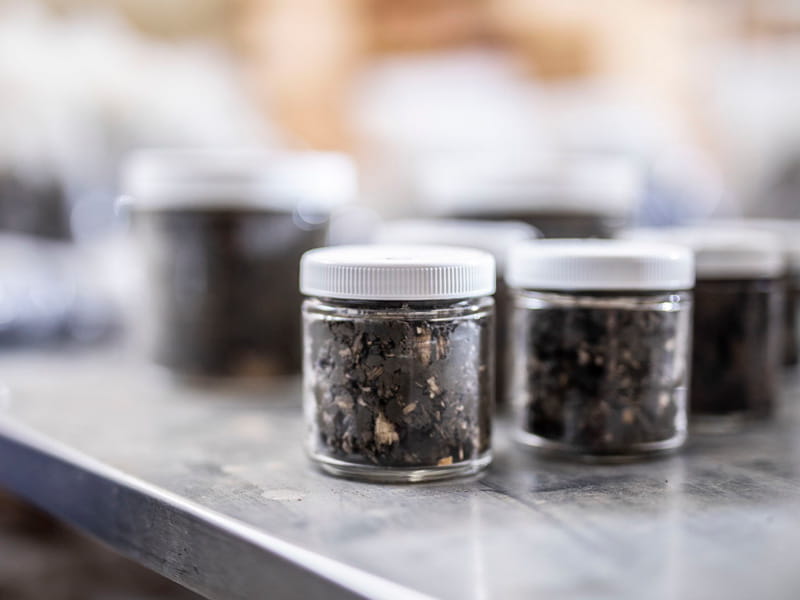Total Petroleum Hydrocarbon Fractions

By Engaged Expert
Carlyle BourgeoisWith over 35 years of multi-media environmental laboratory experience, Carlyle helps clients achieve and demonstrate environmental compliance.
Whether you are purchasing or leasing a property or addressing a petroleum hydrocarbon release at your current property, you should run a Total Petroleum Hydrocarbon (TPH) test to determine the levels of gasoline, diesel, and oil in your soil and groundwater.
Total Petroleum Hydrocarbons (TPH) are the measurable amounts of petroleum-based chemical compounds typically found in gasoline, diesel and oil range organics. To ensure the measurable amount of these compounds meet the Louisiana Department of Environmental Quality (LDEQ) requirements, experts at Element's US-based environmental laboratories run two types of tests: TPH Mixtures testing via EPA SW 846 Method 8015, and TPH Fractions testing via the MA Method.
TPH Mixtures Testing
Since its inception in 2003, the LDEQ Risk Evaluation Corrective Action Program (RECAP) has recognized and allowed the use of Total Petroleum Hydrocarbon mixtures testing via EPA SW 846 Method 8015 for gasoline, diesel and oil range organics. The TPH by 8015 method provides a lump sum result that combines the Aromatic and Aliphatic measurements for the mixtures . While TPH by 8015 is considered the most economical method and procedurally faster, the regulatory limits for the TPH mixtures are more conservative because it does not provide specific risk-based Aliphatic and Aromatic data.
TPH Fractions Testing
If the TPH mixture results do not bring closure to a site, the MA Method Volatile Petroleum Hydrocarbons (VPH) or Extractable Petroleum Hydrocarbons (EPH) method may be used to “Fractionate” the hydrocarbon concentrations present into Aliphatic and Aromatic groups. The MA Method VPH is an appropriate fractionation test when dealing with gasoline, and the MA Method EPH is an appropriate fractionation test when dealing with oil and diesel.
The use of TPH fractions allows for the hydrocarbon concentrations to be divided into aliphatic and aromatic groups and then spread across several carbon ranges, each with specific risk-based limits. When considering the concentration levels, Aromatic groups are more toxic and have lower limits, whereas Aliphatic groups are less toxic and have higher limits. If the site happens to have both TPH mixture data and TPH fractionation data, the more specific fractionation data shall be used to determine corrective action measures.
Consistent with RECAP, both TPH mixtures and TPH fractions have limits for Soil non-industrial (SOIL_SSn), Soil industrial (SOIL_SSi), Soil protective of groundwater (SOIL_SSGW ) and groundwater (GW_SS). LDEQ RECAP Screening Option Limits are tabled below to demonstrate how TPH Fractions are measured and can help bring faster and more cost-effective closure to your site:
TPH-G or VPH
| Analyte | SOIL_SSni (mg/kg) | SOIL_SSi (mg/kg) | SOIL_SSGW (mg/kg) | GW_SS |
| TPH-G | 65 | 510 | 65 | 0.15 |
| VPH Aliphatics C6-C8 | 1,200 | 8,000 | 10,000 | 3.2 |
| VPH Aliphatics >C8-C10 | 120 | 880 | 5,300 | 0.15 |
| VPH Aromatics >C8-C10 | 65 | 510 | 65 | 0.15 |
TPH-D TPH-O, EPH
| Analyte | SOIL_SSni (mg/kg) | SOIL_SSi (mg/kg) | SOIL_SSGW (mg/kg) | GW_SS |
| TPH-D | 65 | 510 | 65 | 0.15 |
| TPH-O | 180 | 2,500 | 10,000 | 0.15 |
| EPH Aliphatics >C10-C12 | 230 | 2,000 | 10,000 | 0.15 |
| EPH Aliphatics >C12-C16 | 370 | 3,800 | 10,000 | 0.15 |
| EPH Aliphatics >C16-C35 | 7,100 | 10,000 | 10,000 | 7.3 |
| EPH Aromatics >C10-C12 | 120 | 1,100 | 100 | 0.15 |
| EPH Aromatics >C12-C16 | 180 | 2,100 | 200 | 0.15 |
| EPH Aromatics >C16-C21 | 150 | 1,700 | 2,100 | 0.15 |
| EPH Aromatics >C21-C35 | 180 | 2,500 | 10,000 | 0.15 |
When working with a consultant company to submit samples for fractionation, it’s important to follow the guidelines below:
VPH Containers, Preservation, and Hold Times
| Matrix | Container | Preservation | Holding Time |
| Aqueous Samples | 2 40ml VOA vials, zero headspace |
pH > 2 via HCL cool to > 6oC but not frozen |
14 days |
| Soil/Sediment | EPA 5035 via 2 Encore devices | cool to > 6oC but not frozen | 48 hours to Encore extrusion then 28 days from date of collection to analysis |
| Soil/Sediment | EPA 5035 via TerraCores, as 2-40ml vials |
vials preserved with methanol, 1:1 ratio methanol to sample cool to > 6oC but not frozen |
28 days from date of collection |
EPH Containers, Preservation, and Hold Times
| Matrix | Container | Preservation | Holding Time |
| Aqueous | 1 liter amber glass bottle or 2-40ml amber vials for Element |
pH > 2 via HCL cool to > 6oC but not frozen |
14 days to extraction with extracts analyzed within 40 days |
| Soil/Sediment | 4 oz amber glass jar | cool to > 6oC but not frozen | 14 days to extraction with extracts analyzed within 40 days |
| Soil/Sediment | 4 oz amber glass jar filled to 2/3 capacity | freeze at -10oC in field or laboratory* | samples extracted within 14 days of the date thawed with extracts analyzed within 40 days |
*Samples processed in the laboratory must be preserved at > 6oC and frozen within 48 hours of sample collection. Properly frozen soil samples for EPH may be held for up to one year prior to analysis and must be extracted within 24 hours of thawing.
Expertise when, and where you need it
Element has an in-depth understanding of both TPH Mixtures and TPH Fractions testing approaches and can cost-effectively perform these procedures allowing for direct comparison of results to the appropriate LDEQ screening standard.
To discuss how the use of TPH Fractions can help bring cost-effective closure to your site and obtain other useful guidance on multi-media environmental testing programs, contact our experts today.
Find related Resources
Get white papers, updates and event invites
Subscribe to content updates
Learn more

Organics Testing in Water
Element’s ecological experts perform analysis of water for organic compounds, to help environmental consultants test surface water and oilfield sites for organics in water.

Volatile Organic Compound (VOC) Testing & Analysis
Element provides the high volume accurate testing required to ensure you are meeting Volatile Organic Compounds (VOCS) highly stringent regulation guidelines, clean-up regulatory requirements and protection of human health.

Microbiology and Toxicity Testing
Element’s experts keep abreast of the latest analytical methods, providing a vast array of tests that determine the microbiology and toxicity levels in soils and liquids according to customers’ specifications and government regulations.

Environmental Testing
Find out how our global team of Environmental Testing Experts help our customers to comply with the very latest environmental obligations through our comprehensive range of laboratory and field based environmental testing services.

